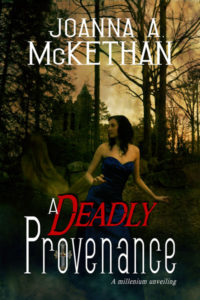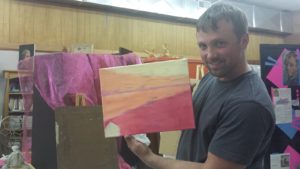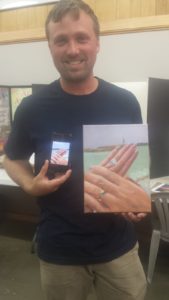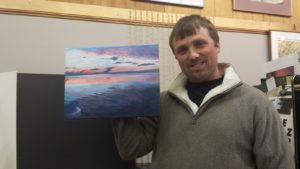An author friend and I were talking about our books one day concerning pivotal scenes. I mentioned the scene in my book, A Deadly Provenance, at an upscale spa in a resort beyond the Munich, Germany, area, where my heroine Lexi got a massage.
“I can’t imagine getting stripped down to your underwear and having someone actually massage you,” my friend said to me during our lunch at the restaurant.
“Oh, it’s not like that,” I said, cutting my schnitzel. “You’re in a dark room, you’re covered with sheets, your head is down in a padded doughnut, there’s relaxed music playing, and there is a protocol which is entirely objective.” Frequently, I’ve fallen asleep and missed the process. However, touch is the magic ingredient, and not everyone is going to like that. For some, it is intrusive, and they would never think of having a massage.
Massages are acknowledged world-wide for their therapeutic results. Spa retreats populate the most exclusive sites in the world; the best vie for world travelers. Some include hot baths. Czechoslovakia was known for its healing mineral waters, even in Communist days. Russians are known for their saunas. Every hotel of any stature at all boasts massage offerings of various sorts; menus exist for low pressure, deep pressure, using the feet, rocks, scents, you name it. I’ve had massages in Europe and various places in the U.S.

updated cover of A Deadly Provenance, set in southern Germany
Massages reduce stress and tension, thereby reducing anxiety and wear and tear on muscles. It reduces muscle tension, improves your circulation, stimulates the lymph system, increases your flexibility, skin tone, soft tissue injury recovery, and heightens your mental alertness.
I’m picky about my massage therapist, but I go every month. I had missed at least two appointments, so this one particular one was special. Long-short story, I had hurt all over, feet, knees, shoulders, hands back, legs, side legs. Tight nodules made me almost scream with pain until they released. We talked about what was different, what hurt that hadn’t before, small talk before she left me so I could climb onto the massage table, pull the blanket up around me, the cover all warmed. The first phase was head down into the doughnut. She knocked after an appropriate interval, and I called out, “Ready.”
I explained all this to my author friend about my anticipation of that last massage I had had, and why this was so important, what made the massage in Germany of my heroine Lexi that I wrote about in my Gothic romance novel, A Deadly Provenance (books.joriginals.net/) so important. It had been a pivotal moment in my character’s life. I re-entered that fictional moment in time and began to relive it. It was every bit as real to me as a piece of history, which from comments made to me at readings, it seems that if you are like most people, you will find strange.
“I’m tracking,” my author friend said. “Lexi was touch-deprived.”
Lexi, my heroine, I explained, was in limbo in a bad marriage, a marriage where the partners were separate and unattached, where Lexi had been dumped. She was not valued over other women by her husband who had ongoing affairs. There was no physical component to their marriage. Touch was nonexistent. Lexi, I expanded on the story, had been left alone by the skiers gathering to plunge and ascend mountains, and had decided to avail herself of a long, deep-tissue massage at the luxury spa in the ski and conference resort located at Castle Enzian. Her husband had left with the party from the NC Embassy group which included the woman she suspected him of seeing. See http://books.joriginals.net/author-books/a-deadly-provenance/
This made the massage experience, I think, a profoundly human one. Touch sparks creativity, as well as connectivity. It is not that much different from a hairdresser who massages your scalp and washes your hair. Not that different from a pedicure or a manicure in a whirlpool of water and having the feet softened and prepared for a pretty finish. Professional, caring, but not personal.
And that was how Lexi enjoyed the experience in the spa in the castle, Castle Enzian. It started with herbs and lotions and scents calculated to expunge tiredness and poisonous worries that had invaded her body. It pushed away the sense of loneliness and being lost and rejoined her to that core part of herself that was able to appreciate the scents of herbs, of tactile muscle work, of having clenched muscle which the week had overtaxed, tightened, and locked up, released again.
It joined her soul to her body once again, rejuvenated her. Why, she felt beautiful once more. She felt less, well, rejected. Which made it a turning point for her in the book.
So you see, you can come along with me into Lexi’s world in this book, a book at once more exotic than your own, maybe even more real, but still as nitty-gritty as yours. Because Lexi is propelled by external realities and some internal ones into a cauldron of events which exercised her to go beyond the everyday…which forced her to extremes you may never have to face…and which bring her to decisions you may only want to contemplate and muse on. Or you may decide would be good for you to try as well.
Lexi has had to move away from her home town and her close circle of friends to a consulate in a foreign country where she must learn a new language, put her son into a foreign school, and endure the outrage of desertion by her childhood sweetheart and her husband. She must try something new, only perhaps to have the same thing happen all over again, with no way out.
From one experience to another one like the moment of truth from a massage, from dungeon to attic, around hairpin curves, to international art circles and political charities, from Nazi leftover villains to a family priest, from home to–well, that’s where I’ll stop. In conclusion, I will just say that the significance of her faith changes, her relationships undergo change, and she may turn into another version of herself, stronger and bolder, in this contemporary version of an old-time classic genre, the Gothic romance novel–or she may fold. And while a massage is only a passing event, it can be a pivotal one in a woman’s life. Without overplaying it at all.
Learn more »


